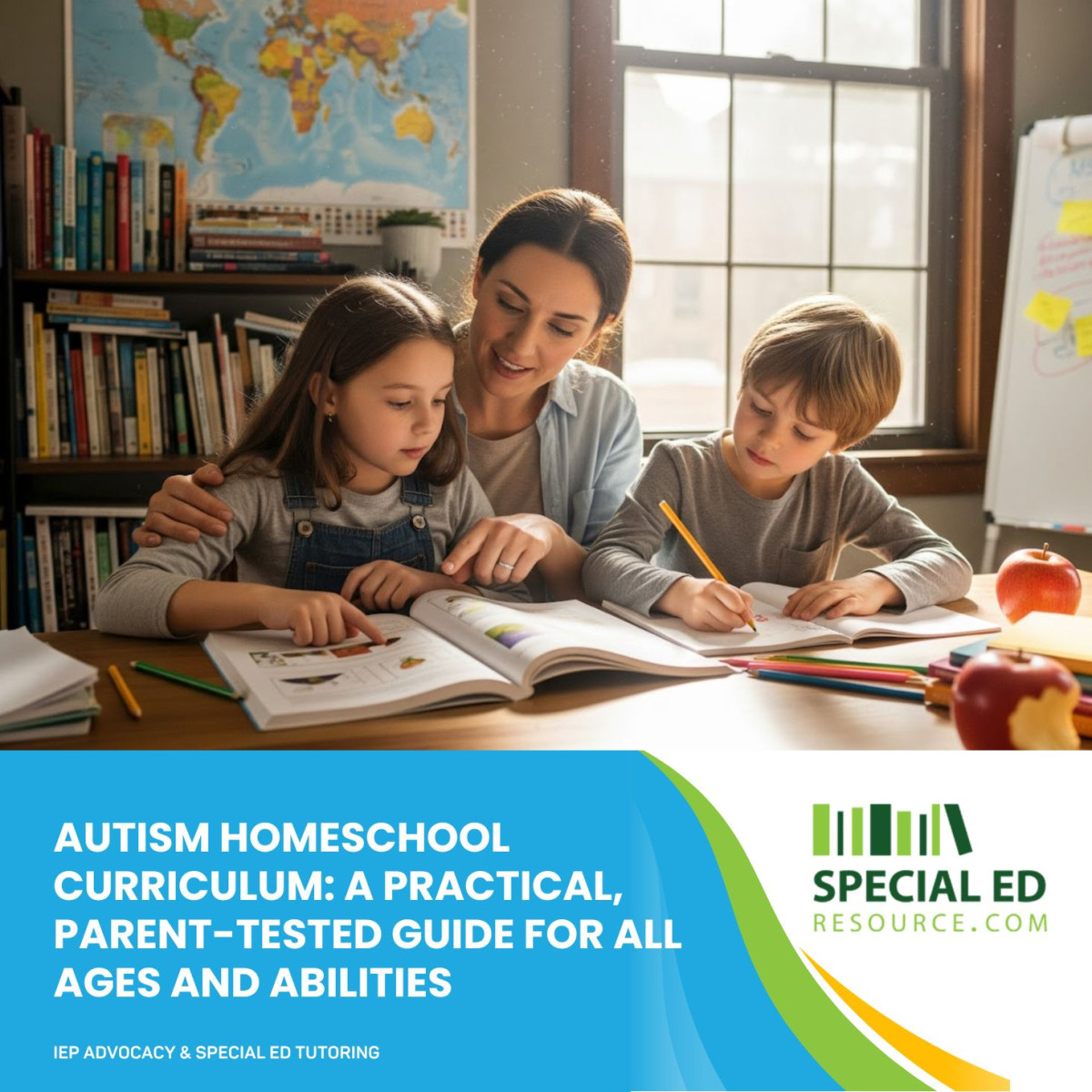By: Press Services
September 26, 2025
Parent-Tested Autism Homeschool Curriculum That Actually Works
Practical Curriculum Strategies for Homeschooling Autistic Students of Any Age
United States - September 26, 2025 / Special Ed Resource LLC /

Every parent homeschooling an autistic child eventually hits the same wall: "Is this working?" That question—usually asked late at night, long after the lesson plan’s gone off course—comes from a deep desire to get it right. And the truth is, it can be. With the right autism homeschool curriculum, teaching a child on the spectrum at home becomes more than manageable—it becomes meaningful.
Not every curriculum is built with autism in mind. Many are too rigid. Others too vague. Some try to mimic a classroom experience that didn’t work to begin with. This guide breaks down what real families use, what educators trust, and what actually helps kids grow—academically, emotionally, and socially.
Why Curriculum Matters More in Autism HomeschoolingA curriculum isn’t just a list of topics to cover—it’s a blueprint for how learning happens. For autistic students, it needs to do more than teach facts. It must support communication, regulate sensory input, adapt to changing moods, and allow for pacing that respects how each child processes the world.
In traditional classrooms, these needs often get buried under standardized expectations. At home, the right curriculum brings them into focus.
Parents need a plan that is:
Adaptable, not chaotic
Structured, not stiff
Built for growth, not just grade levels
That’s where specialized guidance and tools come in. From autism tutors to parent-reviewed programs, families are finding better ways to teach and connect—without burning out or giving up.
 Key Features of a Strong Autism Homeschool Curriculum
Key Features of a Strong Autism Homeschool CurriculumNot all autistic learners need the same thing—but strong homeschool curriculums often share key features that support different strengths, challenges, and learning styles.
1. Visual Structure and RoutineClear schedules and visual aids help reduce anxiety and increase predictability—two essentials for many autistic children. A strong curriculum should come with (or allow for):
Daily or weekly visual planners
Step-by-step visuals for multi-part tasks
Icons or color codes for subject transitions
This structure gives students a sense of control and helps them anticipate what’s coming next.
2. Multi-Sensory Learning OptionsLearning should match how the child processes information. Whether visual, auditory, tactile, or kinesthetic, the curriculum needs to be flexible. Look for:
Text paired with images or read-aloud options
Hands-on materials or activities
Tools like manipulatives, whiteboards, or sensory-friendly apps
Many families also add in music, movement, or outdoor time to reinforce concepts without requiring screens.
3. Language and Communication SupportFor children with expressive or receptive language delays, language is not just about English class—it’s woven through every subject. A quality curriculum:
Avoids overly complex instructions
Breaks down vocabulary and sentence structures
Encourages expressive options: drawing, typing, verbal, or alternative communication methods
If a student is using AAC (Augmentative and Alternative Communication), the curriculum must leave room for those tools to be integrated naturally.
4. Built-In Flexibility for Pacing and InterestsOne-size-fits-all timelines don’t work. A solid autism home education plan needs to move as the student moves—faster in areas of strength, slower where support is needed. Bonus points for curriculums that allow:
Interest-based exploration
Extra time or repetition
Breaks built into the learning cycle
When kids feel seen and supported, their willingness to engage increases—and so does retention.
Curriculum Options by Age and StageEvery family starts from a different place. Here's how to approach curriculum planning across different age groups.
Early Elementary (Ages 5–8)Focus on foundational skills like:
Phonemic awareness and early reading
Basic number sense and quantity
Motor planning and handwriting
Emotional identification and regulation
Look for play-based or game-based elements. Many families at this stage use a hybrid of workbooks, online platforms with parent control, and real-world learning (like cooking or sorting laundry).
Middle Grades (Ages 9–13)At this stage, academic expectations ramp up—but the child may still be catching up emotionally or socially. A good curriculum here:
Teaches executive function (organizing, planning, completing tasks)
Reinforces literacy and math through real-world projects
Encourages curiosity and self-direction with safe, structured choice
Project-based learning often works well, especially when it aligns with a child’s interests (e.g., trains, space, Minecraft, animals).
High School and Transition (Ages 14–18+)In these years, the focus often shifts toward independence and future planning. That includes:
Functional academics (budgeting, reading schedules, writing emails)
Vocational or career-based learning
Life skills: cooking, time management, community participation
Social-emotional strategies that support regulation and self-advocacy
Families often blend formal curriculum with internships, volunteer work, or community classes—making education both relevant and transferable.
 How Tutors Enhance Autism Homeschooling Curriculum
How Tutors Enhance Autism Homeschooling CurriculumEven the best curriculum can fall flat without the right support. That’s why many families partner with tutors who specialize in autism—especially when:
The child needs more structure than a parent can consistently provide
One subject becomes a sticking point (often math, writing, or reading comprehension)
Parents need help adapting materials to fit their student’s processing style
An experienced tutor doesn’t just deliver lessons—they act as a guide, advocate, and coach. They recognize when a method isn’t working, adjust mid-stream, and track progress in ways that make sense for both parent and student.
This kind of partnership helps relieve pressure from parents while keeping the student’s goals front and center.
What to Avoid When Choosing a CurriculumThere’s a lot on the market—but not all of it is helpful. Here are red flags to watch for:
Overly scripted programs that leave no room for flexibility
Heavy reliance on writing or verbal communication only
Curriculums that assume neurotypical pacing or attention spans
No visual support or sensory consideration
Programs that ignore social-emotional learning or regulation
The right curriculum honors the whole child—not just the grade level.
About Special Education ResourceSpecial Education Resource is a national leader in tutoring and curriculum support for families homeschooling students with special needs, especially those on the autism spectrum.
Founded by Luke and his wife—parents who faced these challenges firsthand—the company exists to help families find real solutions, not just temporary fixes. Their approach goes beyond basic tutoring. By identifying the exact learning gaps holding a child back, their expert tutors help students catch up and move forward—with confidence.
Whether it’s one-on-one instruction, small group support, or full program planning, Special Education Resource supports every student, every step of the way.


Contact Information:
Special Ed Resource LLC
,
United States
Luke Dalien
(844) 773-3822
https://specialedresource.com/
This contant was orignally distributed by Press Services. Blockchain Registration, Verification & Enhancement provided by NewsRamp™. The source URL for this press release is Parent-Tested Autism Homeschool Curriculum That Actually Works.
